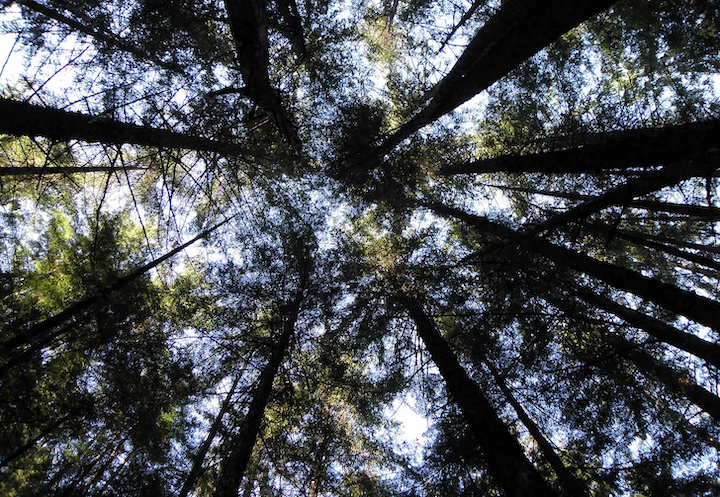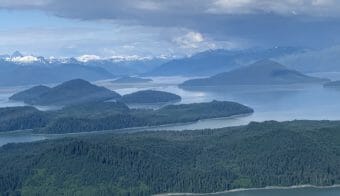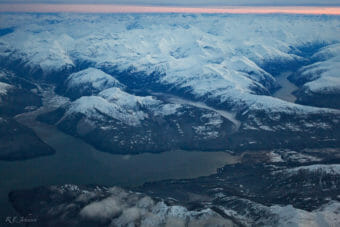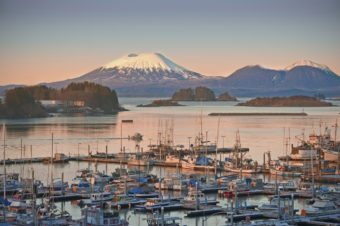
The state of Alaska, a coalition of business groups and a pair of electric-power organizations have opened a new round in the generation-long fight over environmental protections in Southeast Alaska’s Tongass National Forest.
On Sept. 8, the state and two other groups of plaintiffs filed three separate federal lawsuits to challenge a Biden administration rule restricting new roads in parts of the forest, which is home to some of America’s last stands of old-growth trees.
Each lawsuit asks U.S. District Court Judge Sharon Gleason to overturn the new rule and prior versions.
The Roadless Rule, as it is known, was enacted (and sued over) as early as 2001 by logging proponents, but the latest lawsuits bring a new wrinkle: In more than 100 pages of court documents, the word “logging” appears only once.
Instead, plaintiffs are arguing that the federal government’s rules make clean-energy projects and other economic development unaffordable.
The legal complaints cite prospective geothermal and hydroelectric power plants, as well as hypothetical metal mines whose products could be used for green technologies.
“You’ve got true roadblocks for very desirable projects. These are projects that are going to provide cost savings and environmental benefit,” said Luke Wake, an attorney with the Pacific Legal Foundation, which is representing the Inside Passage Electric Cooperative and the Alaska Power Association in one of the lawsuits.
The state of Alaska, which is leading a second lawsuit, has opposed the Tongass Roadless Rule through Democratic, Republican and independent administrations alike.
In a written statement, Gov. Mike Dunleavy said that “Alaskans deserve access to the resources that the Tongass provides — jobs, renewable energy resources, and tourism, not a government plan that treats human beings within a working forest like an invasive species.”
The third lawsuit, which includes the Alaska Chamber of Commerce and Resource Development Council of Alaska among its plaintiffs, is being led by former Gov. and former U.S. Sen. Frank Murkowski, the father of current U.S. Sen. Lisa Murkowski, R-Alaska.
Jim Clark, Frank Murkowski’s former chief of staff and an attorney working on the case, said he remembers when he represented the Alaska Forest Association in a prior lawsuit on the issue.
“This case is old enough to drink in any bar in Alaska,” he said.
In the years since he first worked on the issue, Southeast Alaska’s logging industry has almost entirely vanished. A pulp mill in Ketchikan is now a cruise ship terminal; another in Sitka is a sanctuary for bears.
Overturning the Roadless Rule isn’t about clear-cutting anymore, he said. Instead, it’s about improving access for projects that now need special approval.
“It’s not like we don’t have access under the Biden law, notwithstanding the Roadless Rule, but it is a barrier,” he said.
In legal filings, the Inside Passage Electric Cooperative offered an example: It hopes to build a power line between Kake and Petersburg, allowing those communities to share low-cost power.
The project was expected to cost $17.5 million, but because of the Roadless Rule, it would have to be maintained by helicopter, causing the projected cost to balloon to $65 million.
“As a result of these heightened costs, the Kake-Petersburg Intertie Project remains stalled. But IPEC would resume efforts to further this project if it could obtain road access,” said Jodi Mitchell, IPEC’s CEO, in legal testimony.
Clark said that logging companies aren’t part of these new lawsuits because logging is restricted under a new forest plan, something separate from the Roadless Rule, and the prospects of changing the forest plan are limited.
“There’s no way we’ll be able to change the forest plan to make a difference here,” Clark said.
Kate Glover is an attorney with the environmental law firm Earthjustice, which has participated in prior Roadless Rule lawsuits.
Glover said the attempt to switch to another focus in the Roadless Rule “is certainly noteworthy,” but that the issue “really is about logging,” which was the primary focus of the original rule.
The three lawsuits — which are expected to be combined into one by U.S. District Court Judge Sharon Gleason — will continue a 22-year-old dispute over the extent to which the U.S. Forest Service has the authority under existing law to restrict road building in the forest.
In 2001, the federal government wrote a nationwide rule restricting road building in designated areas. Roads are needed for intensive logging.
The state of Alaska challenged the rule in court, and the federal government agreed to exempt much of Alaska from it.
That changed in 2011, after a federal judge ruled in favor of environmental groups who had filed a lawsuit arguing that the Alaska exemption was unlawful.
The state appealed the verdict and saw it overturned by a three-judge panel of the Ninth Circuit Court of Appeals, but a subsequent appeal to the full Circuit Court saw the Alaska exemption again overturned.
The state challenged the legality of the 2001 rule overall in a separate lawsuit filed in Washington, D.C., but lost that case.
After the election of President Donald Trump, the state supported a new roadless rule that allows Tongass development. The Trump administration passed the new rule, but lawsuits stymied its implementation, and the Biden administration’s new rule, enacted in January, overwrites the Trump rule.
Though the state and allied plaintiffs have repeatedly lost in court on the issue, attorneys say the legal groundwork has changed over the past few years.
The U.S. Supreme Court’s 2022 ruling in West Virginia v. EPA has the potential to significantly reduce the power of federal agencies to write regulations that aren’t specifically authorized by Congress, and in summer 2024, the Supreme Court is expected to reinterpret a standard known as the “Chevron doctrine” and again restrict the authority of federal agencies.
“All of which makes you think the Supreme Court is more favorable,” Clark said.
This story originally appeared in the Alaska Beacon and is republished here with permission.


